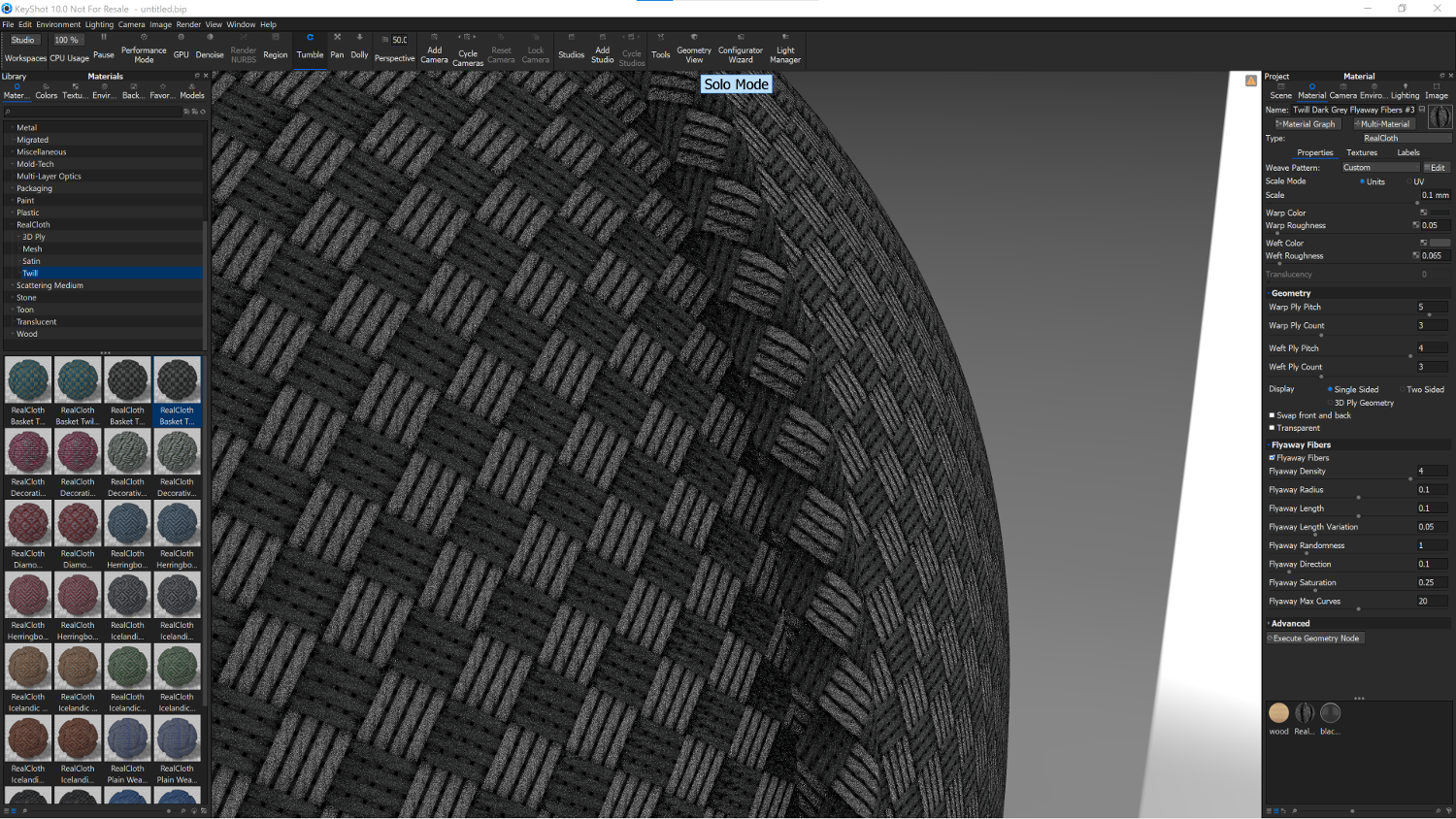
- How to use bunkspeed shot multi layer material software#
- How to use bunkspeed shot multi layer material windows#
The reflection coefficient of the glossy surface (the reflection coefficient depends on the angle of incidence, which reflects less perpendicular to the surface than tangentially)Ĥ. The shader mixes the component of paint (4) and gloss (5) in accordance with parameter (3).ģ. Material Output is needed to output the function to the surface.Ģ. Where (it seemed to me that backwards would be clearer):ġ. I’ll try to explain how it works using an example: To create the desired material, you must have the skills to build shaders using graph nodes. In complex procedural textures, GPU separation is slightly reduced.

The separation of the GPU also depends on the hardware, and the complexity of the procedural textures. UPD: already know, thanks Lockal for the comment. What it is connected with - I don’t want to guess, I don’t know.
How to use bunkspeed shot multi layer material windows#
So that you do not think that my Windows live poorly, I dug up evidence: once (4th message) and two (in English). It would be interesting to find out about the rendering speed on the latest top-end Radeons.Īn interesting fact is that Unixes outperform Windows in rendering speed on the CPU. There is a small benchmark where you can try your hardware. Of course, rendering on the GPU increases the rendering speed by several times.

How to use bunkspeed shot multi layer material software#
Or wait until the GPU is better adapted in hardware and software to the needs of non-graphic computing.īut in view of the lack of such an architecture and the unwillingness to wait until everything “gets cool”, developers around the world are already mastering the GPU with might and main. Often, due to the complexity of the implementation of the algorithms and poor optimization of frameworks (for example, OpenCL), GPU programming is refused.įor mathematical operations (rendering, calculation of physics), a new processor architecture is needed with a small set of instructions, a large number of cores and a set of hardware solutions for fast additions and multiplications of floating-point numbers. Many software solutions that can be easily solved on the CPU require considerable dancing with a tambourine on the GPU through frameworks such as CUDA and OpenCL. The GPU is much better for these purposes.īut the GPU, as a platform initially ground for hardware rasterization (OpenGL, DirectX), is quite difficult to adapt to GPGPU tasks.

The main thing here is the high speed of floating-point operations, and operating with large amounts of data requires good memory bandwidth.

Because of this, it is difficult to place many cores on the CPU, but in single-threaded applications, x86 does its best.īut rendering is multi-threaded to disgrace. The cores of x86-64 architecture processors have a very bulky instruction set requiring a large chip area. The rendering mode using Cycles can be done directly in the active viewport (this is not an innovation, just a convenience), or you can monitor changes in the scene in real time from the camera. It’s extremely difficult to transfer the conservative from 3D max to Blender: another management, “it's not like that!” But, being turned on the topic of rendering aniases, especially on the GPU, I decided to try Cycles, and to learn a new Blender (version 2.63 at the time of publication of this article ).Ī short video about interactivity, and how it all works: Lies in a box with Blender, which runs on Windows, Linux, OSX.Ĭycles Render, a procedural texture car, FullHD took 2 minutes to build on the GTX580.īlender was of little interest to me, even despite some of the advantages I knew: openness, ease of installer, speed of work. I want to share my impressions of the latter.Ĭycles Render - unbiased rendering, with the ability to render on the GPU (CUDA and OpenCL for ATI). But, the opensource community is on the alert, and at least two GPU-free renders known to me have appeared: SmallLuxGPU and Cycles Render. With the development of GPGPU technology, a lot of GPU renderings appeared on the market, among them iRay, V-ray RT, Octane, Arion.


 0 kommentar(er)
0 kommentar(er)
